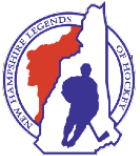Hobey Baker
Year Inducted: 2006
Birthdate: January 15, 1892 - December 21, 1918
Town/City: Wissachickon, PA
Every hockey player knows the name Hobey Baker. Not everyone knows his story, though; not everyone knows that the opening chapter has a New Hampshire dateline.
His given name was Hobart Amory Hare Baker and at age 11 he and his brother Thorton came to St. Paul’s School in Concord from their home in Bala-Cynwyd, PA. Seven years later, he was heralded as one on the great athletes of his day, and his hockey fame was established. He helped build his own legend, skating on Turkey Pond on campus when the moon was high.
A fellow student once recalled that “It was always Hobey who was first on the autumn-scented black ice where, at lightning speed, he led the few friends who could keep up with him on night flights.” It was during these night-skating sessions that Hobey developed the ability to carry the puck while never looking down at his stick. He was, indeed, at that age considered something special and quickly became St. Paul’s number-one athlete, also achieving fame in football, baseball and crew.
On the ice, Baker played in the age of seven-man hockey when forward passing and substitutions were not allowed. He played the position of rover, ie the offensive superstar permitted to roam all over the ice. A typical play for him was to take a rebound in his own end, circle the goal to pick up speed, and then sprint the length of the ice. Because of the no-substitution rule and his phenomenal endurance, this went on the entire game.
After graduating from St. Paul’s School in 1909, he enrolled at Princeton University and his athletic fame continued to grow. Following his junior year in 1913, he was heralded as “the wonder player of hockey.” He led Princeton to two hockey championships and captained the Tigers’ hockey team for two seasons. He also was captain and quarterback of the football team. His two captaincies were considered a rarity then, and even today remains so.
After leaving Princeton, Hobey continued to play hockey for the fabled St. Nicholas Skating Club in New York City until he enlisted as a pilot and joined the famed Lafayette Esquadrille flying unit in World War I. He flew a plane painted with Princeton’s orange and black colors. He survived the war but tragically was killed at age 26 in an air accident in Toul, France shortly after the end of the war while testing a repaired aircraft.
He is among a handful of Americans inducted into the Hockey Hall of Fame in Toronto, honored in 1945. He also was inducted into the College Football Hall of Fame in 1975. He remains the only athlete ever inducted into both. Additionally, in 1973, he was a charter member of the United States Hockey Hall of Fame; and Princeton University inducted him for football and hockey. He was renowned for his sportsmanship and during his Princeton hockey career was penalized only once on the ice.
His name will always be preserved in the hockey world because of the annual award which recognizes strength of character both on and off the ice and is given to the best U.S. Division I collegiate hockey player: The Hobey Baker Memorial Award
